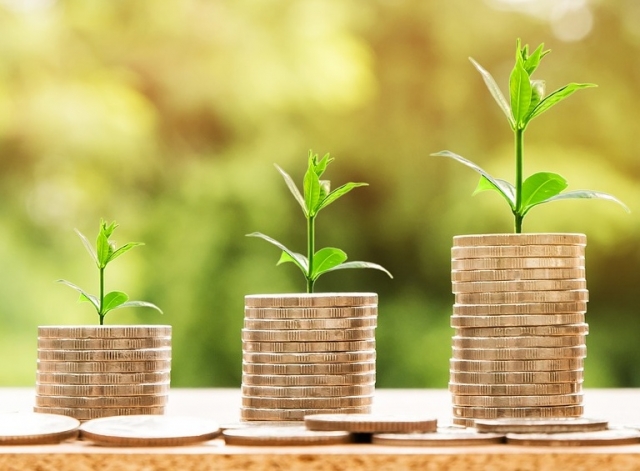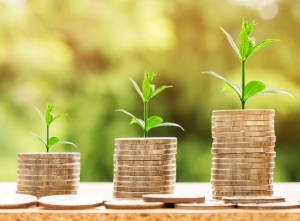Financing the Circular Economy for an Accelerated Post-Covid-19 Recovery
Op-Ed
The transition to a Circular Economy (CE) is at an early stage even in the most developed countries of the world. Nowadays, the world economy is only 8.6% circular, compared to 9.1% two years ago. The global pandemic caused by COVID-19 has further contributed to the economic downturn and shone a spotlight on the resilience of global value chains, which have become increasingly complex and globalized in recent decades.
Georgia has initiated the development of the circular economy strategy and took some important steps to include, for example the introduction of the Extended Producer Responsibility (EPR). On its road to circularity, Georgia should benefit from the experiences of more advanced economies, and form strong partnerships, such as the ongoing program supported by the Government of Sweden and implemented by the Georgian Society of Nature Explorers ‘Orchis,’ in order to choose the most optimal path to the transition to a circular economy (CE). Project promoters and developers targeting CE will also need to structure their strategy so it becomes attractive to financial institutions. The financial sector, particularly from a de-risking perspective, can be a catalyst in unlocking opportunities, while supporting clients in reorienting their business strategies. Companies that shift towards a circular model can increase their medium- to long-term competitiveness, becoming more appealing to financial institutions in terms of funding and financial support, while creating a positive impact within local communities. But first let’s go back to the start.
The circular economy concept is gaining attention in light of increasing consumption and resource use by a fast-growing population with rising standards of living. This is a new economic model that represents sustainable progress towards efficient green growth. Due to its expected environmental, climate, social and economic benefits, the circular economy is not only being strongly promoted by the EU institutions, as well as a growing number of national and local governments, but it is also attracting increasing attention from the business community and from public and private financiers. With the general objective of replacing the ‘end-of-life’ concept with an economic system that closes material loops, Georgia has recently embarked on an accelerated path to transition to a circular economy.
The ongoing program being implemented by Orchis, within the framework of the ‘Keep Georgia Tidy’ project and supported by the Government of Sweden, has already raised much needed awareness about the circular economy, and provided recommendations to various groups of stakeholders, including policy makers, financial institutions and project promoters on how to accelerate the implementation of circular economy principles at various levels of economic activity. This program is the basis for the accelerated shift to circularity. It is also a vital contribution to fulfilling Georgian commitments under the Association Agreement with the European Union.
With the concerted efforts of the government, civil society organizations such as Orchis, academia and international partners, particularly the Government of Sweden, Georgia has also initiated the development of a CE strategy, and a roadmap for a comprehensive approach from multiple points of view. These include production, consumption, waste management, secondary raw materials, innovation, investments, and ongoing initiatives in different sectors, by different players, and at different stages of the value chain or different stages of development. The implementation of this strategy would entail the concerted efforts of many actors to create a conducive environment, but above all will call for practical implementation of projects. Project developers will need to structure projects in such a way that they become attractive for financial institutions, so that the developers are in a position to raise financing not only through concessionary means, but also on the open market.
The circular economy plays a crucial role in helping companies and governments build back better from the COVID-19 pandemic. Financial institutions can support businesses to capture new growth opportunities and build resilience to future shocks. This is why many banks and funds are actively helping clients to transition to new CE models, financing circular deals and investments, and strengthening the knowledge base in this area. While there are costs involved in this transition, the increased resilience gained should result in long-term material gains for everyone involved.
The last two years have seen a steep increase in the creation of debt and equity instruments related to the circular economy. While no such fund existed in 2017, by mid-2020, ten public equity funds focusing partially or entirely on CE have been launched by leading providers, including BlackRock, Credit Suisse, and Goldman Sachs. Since 2016, there has been a tenfold increase in the number of private market funds, including venture capital, private equity and private debt, investing in circular economy activities. A similar trend is visible in bank lending, project finance, and insurance.
Existing examples provide early indications as to how the circular economy can create value for asset managers, banks, and other financial services firms. They demonstrate its potential to attract inflows. The circular economy can help meet demands from regulators and other stakeholders. In addition, building CE expertise and know-how can help financial institutions to engage with corporate clients, for whom the circular economy has increasingly become a boardroom topic.
Now is the time for finance to capitalize on this momentum and help accelerate the CE transition. While the recent growth in financing is promising, far more capital and activity will be needed to scale the CE and fully seize its opportunity. All aspects of finance will play an important role in bringing forward the transition to a circular economy. Investors, banks, and other financial services firms have the scale, reach, and expertise to stimulate and support businesses to make the shift. This is not just about investing in perfectly circular companies or divesting from extractive ones, but about engaging with and encouraging companies in every industry to make the transition.
Obviously, the key issue for the financial sector is risk and how it can be managed. When measuring risk, two main factors have to be taken into account:
• Credit-worthiness of the borrower (or the risk profile of the project);
• Value of the collateral (e.g. underlying assets or contracts).
As new circular business often does not have a strong track record, these companies can easily be labelled as high risk. Often, initial investments to innovate and access the market are high, which may have implications for margins in the short run, but can lead to a quite profitable company in the longer run. The value of the collateral is measured by the market value of the company, where the valuation of assets (and their residual value) plays an important role. Asset valuation in a linear system is quite different from valuation in a circular system.
It is clear that the current development is an opportunity for Georgia to create and shape the market. The government needs to scale the circular economy by setting direction, providing incentives, financing infrastructure and innovation, and using blended finance mechanisms to de-risk investments and attract private sector capital. This approach should be met based on the experiences of other countries to both follow their successes and avoid their mistakes.
There is a general consensus among many experts that in spite of the fact that there are several examples of effective EU nations, such as the Netherlands, Denmark and Finland, and regional policies which support the increasing ‘circularity’ of economic systems, the existing policy frameworks and skills of the policy makers are insufficient to achieve a meaningful acceleration for the transition to a circular economy. Various expert groups have identified several key recommendations for financial and non-financial policy makers, project promoters and public authorities to achieve concerted actions in the acceleration of the circularity measures as part of the recovery measures from the economic downturn caused by COVID-19.
One of the common themes in these recommendations is the need to develop taxonomy, standards and metrics for CE, to enable better assessment of circular risks versus linear risks. Also, social and environmental benefits of CE economy should become explicit, quantifiable and disclosed, and should be taken into account in financing decisions. The experts also stress the role of public authorities and the need to increase their capacities. Public authorities, on all levels, can provide incentives to promote circular economy models via, for example, public procurement, subsidies, taxation and funding. They have the legitimacy and means to reward positive externalities. Work also has to be undertaken to set CE performance requirements for products and services.
There is also a need for partnerships, cooperation and coordination between various stakeholders. Weak policy coordination remains a common feature across countries. At the governmental level, responsibility for the areas of policy relevant to CE tends to be distributed across more than one ministry. Often, existing decision-making structures and processes do not deal effectively with cross-ministerial topics. Better coordination and cooperation between governing bodies would result in addressing the above issues. Policy coordination requires the involvement of stakeholders outside government. The importance of involving private-sector stakeholders, both employers and workers, in policy decisions and in the design of skills development measures, is essential.
It is also essential to strengthen national and local governmental policies to support the widespread implementation of circular business models through, among other things, setting quality standards for recycled and reused materials, or by pushing for innovative initiatives. Further work is required to ensure circular business models become the best option for companies willing to gain competitive advantage and maintain their market share, while aligning their goals with society’s goals. Barriers both at the company level and along the value chain, as well as from a policy perspective, still persist. Overcoming these obstacles and seizing these opportunities is key for the transition towards a more sustainable and competitive economic model.
The recovery measures from COVID-19 proposed by governments present an opportunity to seek greater circularity in supply chains, which can act both to improve resource efficiency and resilience for businesses (by building greater resilience to supplier risks), and society (by reducing environmental risks). Circular value chains also help to advance climate mitigation via reduced primary material production and opportunities to shift consumption towards product-service and other circular business models. This opens an opportunity for governments to require both clear actions towards alignment with environmental policy objectives, as well as disclosure of climate-related risks as conditions for financial support through recovery policies. Governments can catalyse this shift by attaching conditions on stimulus packages to increase the uptake of these technologies, as well as through targeted innovation policies.
The circular economy is a blueprint for a more resilient economic system that could drive significant economic, social and environmental benefits for all stakeholders. Private investment will play a key role in financing this transition, offering the potential for competitive returns while reducing waste, preserving natural resources, and addressing climate change.
The circular economy encourages innovation, decouples economic growth from resource inputs, and is a powerful contribution to achieving global climate targets, which is imperative. It offers many benefits in terms of environmental impact, resource-saving, cost-cutting and economic growth. This major change in our economic model will foster the emergence of new business models and create substantial opportunities for the companies able to respond to this trend.
The ongoing program is implemented by CSO Georgian Society of Nature Explorers Orchis within the framework of the “Keep Georgia Tidy “project supported by the Government of Sweden.
Mr Dariusz Edward Prasek is a Doctor in Environmental Engineering, Member of the United Nations Advisory Board on Circular Economy, Independent Expert on Development Financing at IDB Invest, International Expert in Environmental, Social and Governance Areas
Mr Solomon Pavliashvili is a Doctor of Economic Sciences, Professor, Deputy Minister of Environment Protection and Agriculture
By Dariusz Edward Prasek & Solomon Pavliashvili











